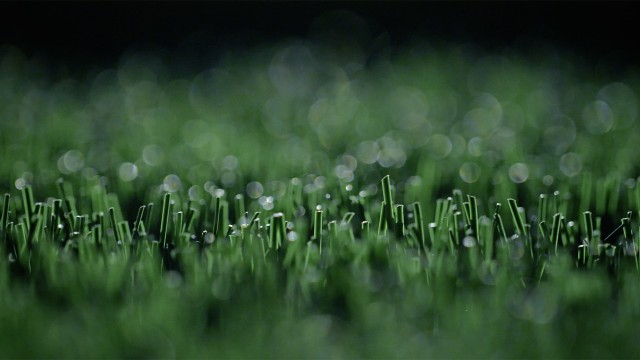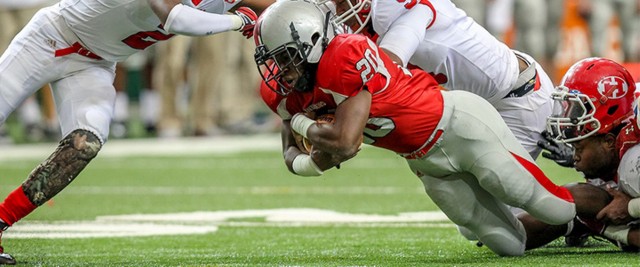An article in The New York Times (“Concussion Report Highlights Field Maintenance,” Dec. 29) linked concussions in football players to poorly maintained fields. But the report, issued by the Concussion Legacy Foundation, has the potential to confuse field administrators, coaches, players and parents.
According to The Times’ article, “the Concussion Legacy Foundation called attention to the link between head injuries and poorly maintained fields, especially the growing number of those made of synthetic turf.”
The report, which is labeled as a white paper, went on to explain that “[in] a study of a nationally representative high school population, 21.5 percent of concussions across multiple sports occurred as a result of contact with the playing surface. 15.5 percent of concussions were the result of primary head-to-surface contact, and an additional 6 percent were caused by secondary head-to-turf contact after a player-to-player impact.”
Alarming data? Initially, it might seem that way. But let’s dig further. First, it’s important to note the disclosure in the white paper that the Concussion Legacy Foundation receives funding from Brock International, a company that manufactures shock pads for artificial turf.
Second, the data presented is simply misleading. In order to determine if there is a real difference between the number of head-to-surface concussions on artificial turf and natural grass, we contacted Dr. Michael C. Meyers, an associate professor in Idaho State University’s Department of Sport Science and Physical Education.
There is additional data available to help you learn about concussion risk on artificial turf compared to other surfaces. In an ongoing annual study tracking the number of concussions high school football players suffered on natural and synthetic surfaces over 12 years, Idaho State University researcher Dr. Michael Meyers indicates that:
11.6 % of all concussions are the result of player-to-surface contact. 88.4 % of the remaining concussions occurred during player-to-player contact. Interestingly, when comparing surfaces, 11.8 % of player-to-surface concussions occurred on natural grass, while 11.4 % were sustained on synthetic turf. Even more overwhelming: only 1 % of total injuries were player-to-surface concussions — meaning that 99 % of all high school football injuries, including concussions, are not player-to-surface concussions. “The turf is not the problem that people think it is,” Meyers says. “I can’t even say this is a natural grass problem. I’m going to be fair to both sides of the issue.”
The percentages are even smaller when it comes to the NCAA level. Meyers’ research indicates that 5.9 percent of all concussions at the college level are the result of player-to-turf contact (with a slightly higher percentage occurring on natural grass compared to artificial turf).
Even more revealing is the fact that less than one-half of one percent — .43 percent, to be exact — of all college football injuries, including concussions, are player-to-turf concussions.
“I’m not downplaying the seriousness of concussions,” Meyers says. “Any type of head injury can be life-threatening and is not to be taken lightly.”
Another recent study, this one conducted by researchers at the University of Toronto and involving game-day injuries to players in the National Football League, supports Meyers’ work. The study collected injury reports from regular-season games played during the 2012 and 2013 seasons and indicates no difference in concussion rates between natural grass or artificial turf. Researchers concluded that "risk of concussion was not associated with ... playing surface," adding that “there is limited evidence linking surface type to upper extremity injuries. New synthetic surfaces have improved shock-absorbing properties and may be more forgiving.”
If an artificial turf field is causing concussions, Meyers says, it is the result of either uneven infill caused by poor maintenance or a low infill weight. Research presented at the 2014 annual meeting of the American Orthopedic Society for Sports Medicine focused on game-related high school football injuries across artificial turf systems of various infill weights. As the artificial infill surface weight decreased, the incidence of game-related high school football trauma significantly increased.
Why? The various proprietary sand/rubber infill compositions applied during the construction of an artificial turf field are typically defined in pounds of infill per square foot of surface (p/sq.ft.). FieldTurf offers the heaviest weighted infill system on the market, at 9.2 p/sq.ft. — making it the safest option. The company also offers infill at 6 p./sq.ft., while many other surface manufacturers use weights of 5.9 p./sq.ft. or less.
“If you go less than 6 p./sq.ft., you’re going to enhance the opportunity for injury trauma,” Meyers says.


